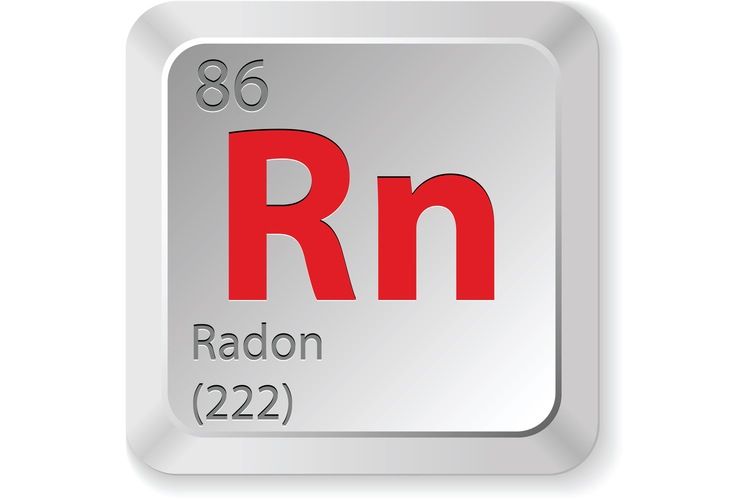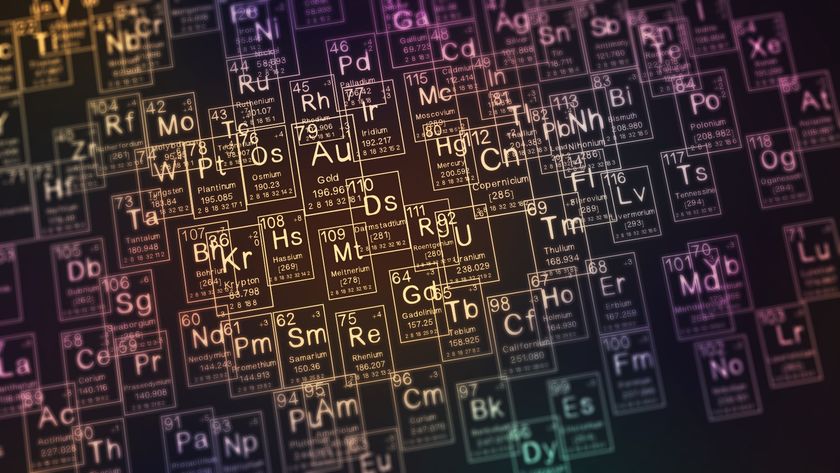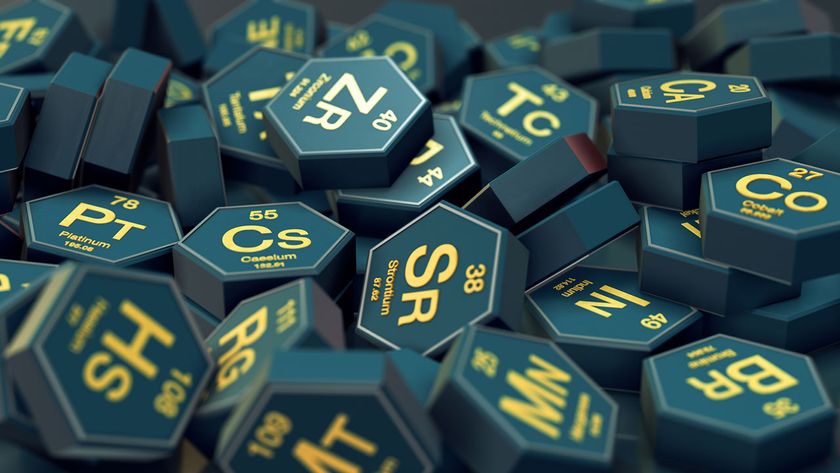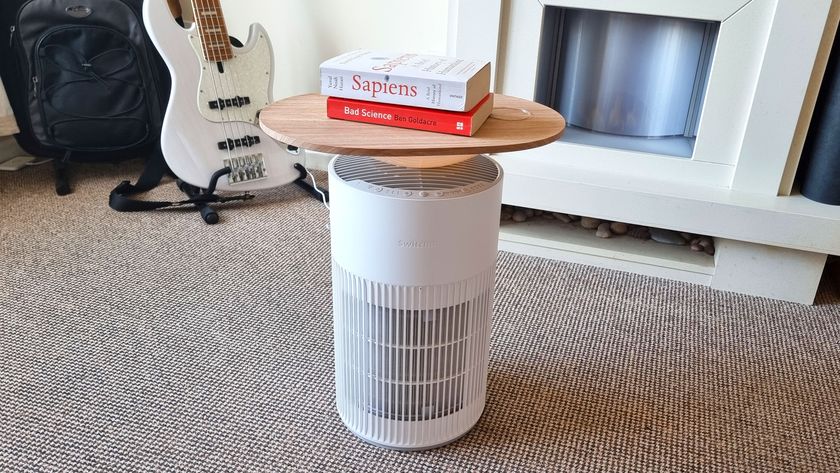Facts About Radon

Radon (Rn) is a radioactive, colorless, odorless and tasteless gas that occurs naturally as the decay product of the elements radium, uranium and thorium. It is a noble (or inert) gas, meaning it is inactive chemically and combines with other substances only under extreme conditions. It is dense — the heaviest known gas — and it is considered a health hazard due to its radioactivity..
Radon is rare in nature because its isotopes are so short-lived and because its main source radium is also quite rare, according to Encyclopaedia Britannica. Radon has no known biological purpose but is believed to have played a major role in evolution, since radiation is required for genetic modifications to take place, according to the Royal Society of Chemistry.
Just the facts
- Atomic number (number of protons in the nucleus): 86
- Atomic symbol (on the periodic table of the elements): Rn
- Atomic weight (average mass of the atom): 222
- Density: ;9.073 grams per liter
- Phase at room temperature: Gas
- Melting point: minus 95 degrees Fahrenheit (minus 71 degrees Celsius)
- Boiling point: minus 79 F (minus 61.7 C)
- Number of isotopes (atoms of the same element with a different number of neutrons): 3 naturally occurring (radon-219, radon-220, and radon-222); 33 whose half-lives are known with mass numbers 196 to 228; none are stable
- Most common isotope: Rn-222 (half-life of 3.823 days)
Discovery
Credit for the discovery of radon is given to German chemist Friedrich Ernst Dorn in 1900, according to Chemicool. He discovered the new gas, which he referred to as radium "emanation," while studying radium's decay chain. Radium had been discovered just two years earlier by the Nobel Prize winning scientist Marie Curie.
Scottish chemist Sir William Ramsey, winner of the Nobel Prize for chemistry in 1904, explored the properties of radon even further. With the help of English chemist Robert Whytlaw Gray, Ramsey isolated radon and calculated its density so that it might be included correctly in the periodic table. They discovered that it was the heaviest gas ever known. They renamed the gas to "niton" after the Latin word for shining (nitens). But this name didn't stick either, and by 1923, it became known around the world as "radon," according to Chemicool.
Danger
Radon is present in the air nearly everywhere, and everyone breathes in radon every day, according to the National Cancer Institute. At low levels, it is harmless. However, people who inhale high levels of radon are at an increased risk of developing lung cancer.
According to the Environmental Protection Agency (EPA), radon is the No. 1 cause of lung cancer among non-smokers and is associated with approximately 21,000 lung cancer deaths a year; 2,900 of those deaths occur among people who have never smoked.
Around one in 15 homes in the United States has elevated radon levels. The odorless gas can enter homes through cracks in walls, floors and foundations. It can also be released from building materials or through water originating from radon-contaminated wells, according to the National Institutes of Health (NIH). Radon levels can be greater in homes and buildings that are well-insulated, tightly sealed or built on soil rich in the radioactive elements uranium, radium and thorium.
A measurement of radioactivity is picocuries per liter of air (pCi/L). In the United States, the average indoor radon level is about 1.3 pCi/L, according to the EPA. The average outdoor level is about 0.4 pCi/L. The U.S. Surgeon General and EPA recommend fixing homes with radon levels at or above 4 pCi/L. The EPA also recommends that people think about fixing their homes for radon levels between 2 pCi/L and 4 pCi/L.
The 'Watras Incident'
In 1984, an odd coincidence known as the "Watras Incident" led to the discovery of the highest radon reading ever in Pennsylvania and ultimately urged the EPA to get involved in monitoring radon levels in residential homes.
Stanley J. Watras, a construction engineer at the Limerick nuclear power plant in Pottstown, Pennsylvania, set off the alarm at a radiation monitor installed to ensure that workers were not leaving the building with unsafe levels of radiation on their bodies.
This was quite a surprise, because the plant was still under construction and had not even been filled with nuclear fuel yet — so exposure would have been impossible. Eventually, a team of specialists discovered that Watras was not picking up the radiation at the plant, but from his own home —radiation levels in his home were 700 times higher than the maximum level considered safe.
The specialists discovered that the culprit was radon gas, which had been seeping into his home from underground, according to The Morning Call. Living there was the equivalent of smoking a couple hundred packs of cigarettes a day.
The family moved out immediately, and the home was turned into a scientific laboratory for the long-term measurement of radon and the testing of radon mitigation approaches. After several months, the radon was reduced to an acceptable level, and the family returned. Today, the U.S. Surgeon General and the EPA recommend that all homes be tested for radon.
Who knew?
- Radon was the fifth radioactive element to be discovered, after uranium, thorium, radium and polonium.
- Radon gas is colorless, but it exudes a brilliant yellow phosphorescence (light emitted from a substance without perceptible heat) at temperatures below its freezing point.
- Decades ago, radium salts were mixed into paints to make them glow in the dark. Once the EPA deemed radon a health risk, however, radon was pulled from consumer products.
- Hundreds of years ago, a wasting disease of miners was known as mala metallorum. In 1879, the condition was identified as lung cancer caused by exposure to radioactive substances, including uranium and radon.
Surprising research: Is radon beneficial in low doses?
For thousands of years, people have bathed in natural hot springs for the therapeutic properties of the water. Many of these spas have been found to contain radon. And yet,rather than developing radiation sickness or cancer, many claim that bathing in the radon-rich groundwater reduces inflammation and pain.
Also, radon was sometimes used by hospitals to treat cancer and other diseases. Hospitals used to produce it themselves by pumping radon from a radium source and sealing it in small tubes called seeds or needles. The seeds were injected at or near the site of the tumor. However, this is no longer a widespread practice.
A study led by researchers at Worcester Polytechnic Institute suggested that low levels of radon gas -- those levels typically found in 90 percent of American homes -- may actually reduce the risk of developing lung cancer by as much as 60 percent. The findings were published in the journal Health Physics in 2008.
The results contrast the findings of previous studies, which suggested that low-level radon exposure is tied to a slightly elevated risk of lung cancer (with no statistical difference) or no risk at all, according to the study press release in Science Daily.
The study is the first to find a statistically significant hormetic effect of low-level radon exposure. The hormetic effect (hormesis) occurs when toxins and other environmental stressors have a beneficial effect at very low doses. The prevailing idea is that low doses of such toxins stimulate the immune system and the repair mechanisms in cells.
The researchers were quite surprised at the findings. In fact, the goal had been to establish what level of radon exposure was linked to lung cancer risk and to determine a safety zone for radon levels in the home, according to Science Daily.
Ultimately, they found that the chance of developing lung cancer fell below one (the no effect level) at radon exposure within the range of 0-4 picoCuries per liter, according to Science Daily. This is the level of around 90 percent of homes in the United States. The EPA recommends that homeowners take action when exposure levels reach over 4 picoCuries per liter, due to the belief that increasing radon exposure is correlated to a progressively greater risk for cancer.
The researchers noted that the new findings do not dispute the lung cancer risk tied to greater levels of radon exposure, such as that experienced by uranium miners. However, the study shows a significant departure from previous results and beliefs about radon.
A 2011 research article published in the peer-reviewed journal Dose-Response showed similar results. The researchers reported that low-level residential radon is credited for an effect known as "activated natural protection" (ANP) against lung cancer, including smoking-related lung cancer.
Sign up for the Live Science daily newsletter now
Get the world’s most fascinating discoveries delivered straight to your inbox.













